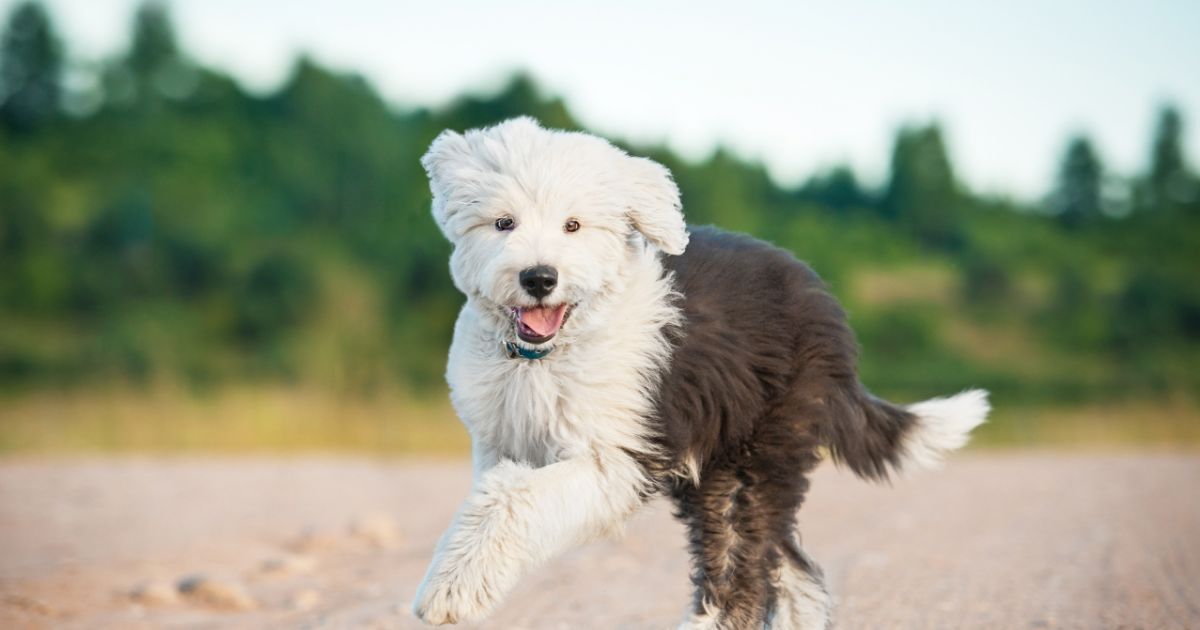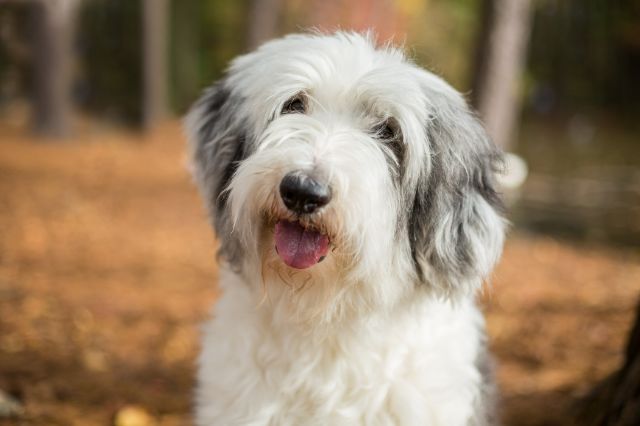
Old English Sheepdogs are a charismatic and distinctive breed, known for their shaggy double coat and amiable personality. Originally bred for herding and driving cattle and sheep, they are playful, intelligent, and have a friendly disposition that endears them to many. Beyond their well-known appearance and affable nature, Old English Sheepdogs exhibit several unusual habits that are both intriguing and endearing. These habits often stem from their herding heritage, their environment, and their unique physical attributes. This article delves into seven peculiar habits of Old English Sheepdogs, providing insights into why these dogs might display such distinctive behaviors and how these actions reflect their breed characteristics and historical background.

1. “Sheepdog Shuffle”
The “Sheepdog Shuffle” is a distinctive movement often observed in Old English Sheepdogs. This involves a light, hopping skip that appears when they are particularly excited or playful. This habit likely originates from their need to change directions quickly while herding livestock, a skill essential to managing unruly sheep. The shuffle is not only practical but also adds to their charming character, demonstrating their lively spirit and boundless energy.
2. Nudging with the Nose
Old English Sheepdogs have a peculiar habit of nudging people and objects with their nose. This behavior can be attributed to their herding instincts, where gentle nudges were used to direct livestock. At home, these nudges often serve as a way to seek attention or communicate their needs, such as wanting to play or go outside. It’s a gentle reminder of their presence and a request for interaction, showcasing their social and attentive nature.
3. “Singing” or Vocalizing
These dogs are known for their distinctive “singing,” a form of vocalizing that involves a range of howls, whines, and melodious barks. This unusual habit may serve as an expression of their mood or a method of communication within the pack, both with humans and other dogs. Old English Sheepdogs use these sounds to convey everything from excitement and happiness to apprehension and discontent, reflecting their communicative and expressive nature.
4. Herding People
Even in the absence of sheep, Old English Sheepdogs often retain their herding instinct, which can manifest in them gently herding their human family members, especially children. They may circle around or gently push with their bodies to guide people to where they think they should go. This behavior is a direct link to their pastoral origins and shows their protective and guiding instincts towards their family members.
5. Creating Their Own Paths
These dogs are known for their unusual habit of creating paths in their living environment, often walking along the same routes around the yard or home. This behavior likely stems from their days in open fields, where creating and following paths would help in patrolling and managing the herds. It’s a sign of their methodical nature and a comfort in routine, which helps them feel in control and secure in their environment.
6. Collecting and Hoarding
Old English Sheepdogs have a quirky habit of collecting items from around the house, which they often stash in their sleeping area or another favorite spot. This may include toys, socks, and occasionally objects like remote controls. This behavior is thought to stem from their instinct to gather and protect resources, a useful trait in their herding days, reflecting their nurturing and possessive traits.
7. Lying on Cold Surfaces
Despite their thick coats, Old English Sheepdogs often prefer lying on cold surfaces such as tile floors or near drafty doors. This preference helps them regulate their body temperature, especially during warmer months or after physical activity. It’s an unusual habit for a dog with such a dense coat, but it illustrates their practical approach to comfort.

Old English Sheepdogs are not just lovable and fluffy companions; they are also breeds with deep-rooted behaviors that echo their herding heritage. These unusual habits provide a glimpse into their historical roles and add to their endearing personality. Understanding these traits helps in providing appropriate care and stimulation, ensuring these intelligent and playful dogs lead a happy and fulfilled life. Whether they are nudging for attention or creating paths in the backyard, each habit is a testament to their unique nature and adaptability.
Discover more from reviewer4you.com
Subscribe to get the latest posts to your email.





